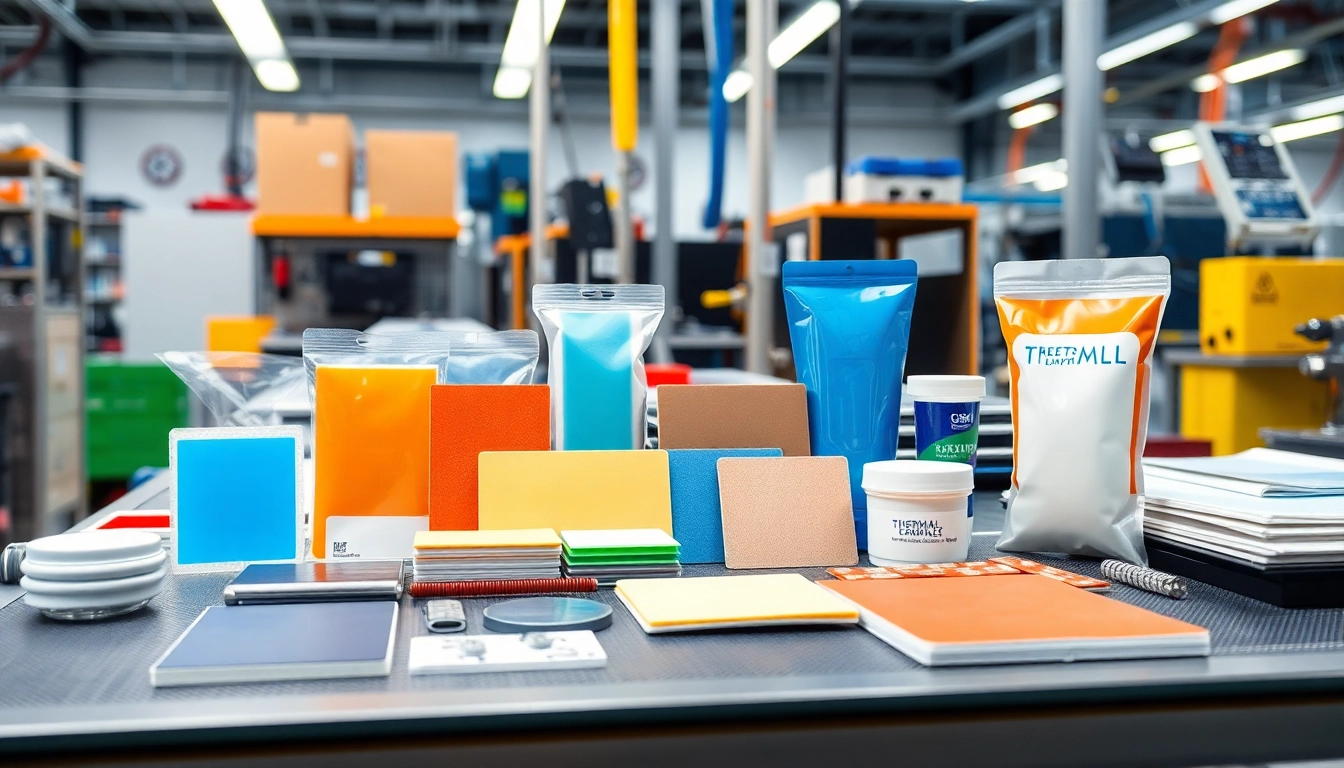What Are Thermal Management Materials?
Definition and Function of Thermal Management Materials
Thermal management materials are crucial components in modern electronics, engineered to efficiently transfer heat away from sensitive components to maintain optimal operating conditions. These materials help manage and dissipate heat generated during the functioning of electronic devices, such as smartphones, computers, and automotive systems. Without effective thermal management, electronics can overheat, leading to reduced performance, shortened lifespan, and potential failures.
Essentially, thermal management materials serve several functions: they act as thermal interface materials (TIMs) to facilitate heat flow, insulate components from thermal stress, and protect sensitive electronic parts from damage. They include a variety of materials such as gels, pads, adhesives, and phase change materials (PCMs), each tailored for different applications based on their thermal conductivity and mechanical properties.
Types of Thermal Management Materials Used in Electronics
Thermal management materials come in various forms, each suited to specific applications:
- Thermal Pads: These are typically made of silicone or polymer with high thermal conductivity, designed to fill air gaps between heat-producing components and heat sinks.
- Thermal Gels: Used in applications where flexibility and conformability are required, gels provide excellent contact and thermal transfer without the rigidity of pads.
- Thermal Adhesives: These materials bond components together while efficiently conducting heat away. They are essential in applications where mechanical support and heat dissipation properties are required.
- Phase Change Materials (PCMs): These materials absorb and release thermal energy during phase transitions, providing incredible thermal stability in applications such as battery management systems.
- Thermal Gap Fillers: Gap fillers are thicker, paste-like materials that can fill larger voids, enhancing heat transfer between components with different surface characteristics.
Importance of Effective Heat Dissipation in Devices
The significance of effective heat dissipation cannot be overstated. In high-performance electronics, excessive heat can lead to reduced efficiency and performance degradation. For example, in high-powered CPUs and GPUs, inadequate thermal management can cause throttling, where the processor slows down to prevent damage from overheating. In automotive applications, such as electric vehicles, efficient thermal regulation is vital for battery longevity and performance. Therefore, implementing robust thermal management solutions not only protects devices but also enhances their overall reliability and lifespan.
Key Characteristics of Quality Thermal Management Materials
Thermal Conductivity and Performance Metrics
One of the primary characteristics of thermal management materials is thermal conductivity, typically measured in watts per meter-kelvin (W/mK). High thermal conductivity ensures effective heat transfer, which is essential for preventing overheating. When selecting thermal management materials, look for performance metrics that include:
- Thermal Conductivity: Ideally, thermal management solutions should provide high thermal conductivity to maximize heat flow.
- Thermal Resistance: This indicates the effectiveness of a material to resist heat flow, with lower resistance being preferable.
- Viscosity and Workability: For materials like gels and adhesives, viscosity affects application ease and the ability to fill gaps efficiently.
Durability and Compatibility with Electronic Components
Durability is crucial when selecting thermal management materials. They must withstand varying temperatures and environmental conditions without degrading. The compatibility of a material with different electronic components, including plastics, metals, and ceramics, is also necessary to prevent chemical reactions that could impair performance. In particular, materials should resist oxidation, thermal degradation, and mechanical stress during product lifecycle.
Environmental Impact and Sustainability Considerations
In recent years, sustainability has taken center stage in materials science. Manufacturers and developers of thermal management solutions are increasingly focused on creating materials that are environmentally friendly. This includes using non-toxic substances, recyclable materials, and minimizing waste during production. Additionally, some manufacturers are developing thermal management materials that are designed from bio-based resources, showcasing a progressive move towards eco-friendly solutions in electronics.
Applications of Thermal Management Materials
Common Uses in Consumer Electronics
In the consumer electronics sector, thermal management materials are ubiquitous. Smartphones, tablets, and laptops utilize these materials to ensure that high-performance processors do not overheat. For instance:
- Smartphones often employ thermal pads and adhesives to connect heat-producing components to heat sinks.
- Laptops utilize thermal gels and phase change materials in cooling solutions to maintain efficient thermal operation.
- Wearable technology increasingly relies on effective thermal management to increase usability and comfort without overheating.
Innovative Applications in Automotive Technologies
The automotive sector has seen remarkable advancements driven by the need for effective thermal management. Electric and hybrid vehicles are particularly dependent on reliable thermal solutions to ensure the longevity and efficiency of battery packs. Some notable examples include:
- Battery Thermal Management: Thermal materials control battery temperatures during charging and discharging cycles, enhancing performance and lifespan.
- Power Electronics Cooling: These components, such as inverters and converters, require effective thermal management solutions to function efficiently within the overall vehicle operations.
Heat Management in Industrial Equipment
In industrial applications, thermal management materials help control temperatures in machinery and electronic assemblies. Industries like manufacturing, aerospace, and telecommunications rely on these materials to ensure the efficiency and safety of their operations. For example:
- Industrial robots utilize thermal pads and adhesives to connect electronics that manage movement and processing.
- Telecommunications equipment often relies on thermal gels and pad systems to keep transmission systems cool during high-demand periods.
Selecting the Right Thermal Management Materials
Factors to Consider When Choosing Thermal Solutions
Selecting appropriate thermal management solutions involves careful consideration of a variety of factors:
- Thermal Properties: Match the thermal conductivity and resistance to application requirements.
- Environmental Resistance: Ensure materials can withstand environmental factors including moisture, chemicals, and UV exposure.
- Mechanical Properties: Assess whether the physical characteristics (rigidity, flexibility, etc.) suit the application needs.
Comparative Analysis of Different Thermal Materials
Conducting a comparative analysis can be beneficial to determine the best thermal management material for specific applications. This typically includes:
- Benchmarking Performance: Use standardized tests to compare thermal performance metrics across different materials.
- Cost-Effectiveness: Evaluate materials not only based on performance but also affordability, especially in large-scale applications.
Supplier Insights and Accessibility
When selecting thermal management materials, ensure suppliers are reputable and provide comprehensive support. Considerations should include:
- Product Variety: A wide range of available thermal management solutions can accommodate diverse needs across applications.
- Technical Support: Suppliers that offer application advice and technical resources can significantly enhance the material selection process.
Future Trends in Thermal Management Materials
Emerging Technologies and Innovations
The future of thermal management materials is exciting, with several emerging technologies poised to transform the landscape. Innovations include:
- Nanomaterials: Leveraging nanotechnology to create materials with superior thermal conductivity and lower thickness could revolutionize design approaches in electronics.
- Adaptive Thermal Management Systems: Technologies that dynamically adjust thermal properties in real time based on operational conditions promise enhanced control and performance improvements.
Market Forecast and Growth Opportunities
The global demand for thermal management materials is projected to grow significantly, driven by increasing electronics, automotive applications, and the rise of renewable energy technologies. This growth presents numerous opportunities for companies developing innovative materials and solutions.
Adapting to Changing Industry Standards
As industries evolve, so do the standards governing thermal management materials. Companies must remain agile to adapt to new regulations, performance standards, and sustainability mandates. Engaging in continuous research and development is vital to staying ahead of market demands.



